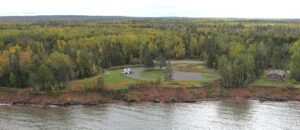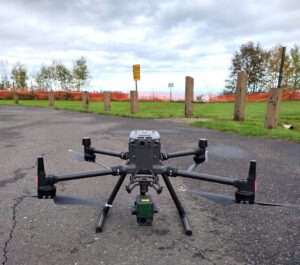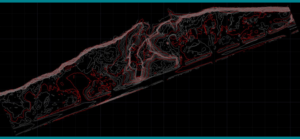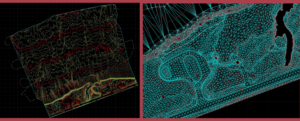Dana Colbert Park is an approximately 50-acre public park in Savoy, Illinois. The park has some unique features including a large pond surrounded by a trail and a steep hill designed and constructed as a sledding hill. The City hired MSA to survey and design updates and improvements to the park. Because of the open nature of the park with little tree cover and the grass mowed short, it made for a good candidate for a photogrammetric survey conducted with a drone.
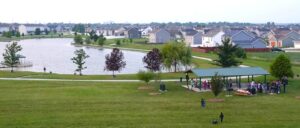
Photogrammetric survey requires aerial photography, but to tie the photos to the location, best practices are to set ground control that can be observed by the drone. Because this project required a survey of the overall boundary of the park and there were a few areas requiring traditional survey, it was practical for surveyors to set ground control while taking care of the other tasks that require boots on the ground.
The drone flight conducted for this approximately 50-acre site collected nearly 400 photos in 20 minutes’ time. The photos were then processed relative to the local ground control, allowing for the creation of a few types of deliverables. Geo-referenced images are some of the most valuable deliverables. These are current photos captured at the time of flight, geo-referenced to match all other geo-correct data that has been acquired or created. Designers and clients can look at a picture and see in detail the precise conditions at the time of the flight. The imagery can be referenced relative to any other survey data, design data, or GIS data that may be available. From the imagery, site changes can be detected that wouldn’t necessarily be possible utilizing other, less current, imagery sources. Utility locates called in for the project, for example, can often be seen and mapped, and the geo-referenced images help answer questions that arise when reviewing survey CAD data.
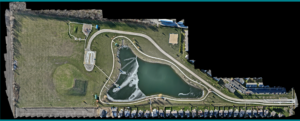
Additionally, photogrammetry can be used to create a point cloud from which topographic survey data, including surfaces, can be extracted. Once the photos have been processed and tied to the ground control, a point cloud can be generated. The point cloud can be classified into different data types such as buildings, vegetation, above-ground utility structures, and surfaces. These classifications act as a filter to aid in cleaning up the data, and once filtered, the data can be saved or converted to another type of file, like a surface model that can be brought into CAD for design.
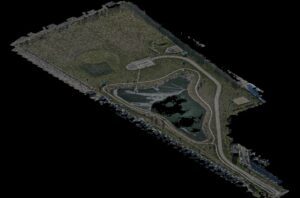
The efficiencies created by photogrammetric survey speak for themselves, but the value of the additional data captured by the photos may be where a drone surveying truly shines. Traditional survey data is often the most practical, if not the best way, to capture the most accurate survey information, but it cannot always explain things the way a picture (or 400 pictures) can.
MSA’s team of surveying professionals is dedicated to researching and testing all the latest survey tools while also utilizing traditional survey methods to provide the best possible data to our designers and clients.

